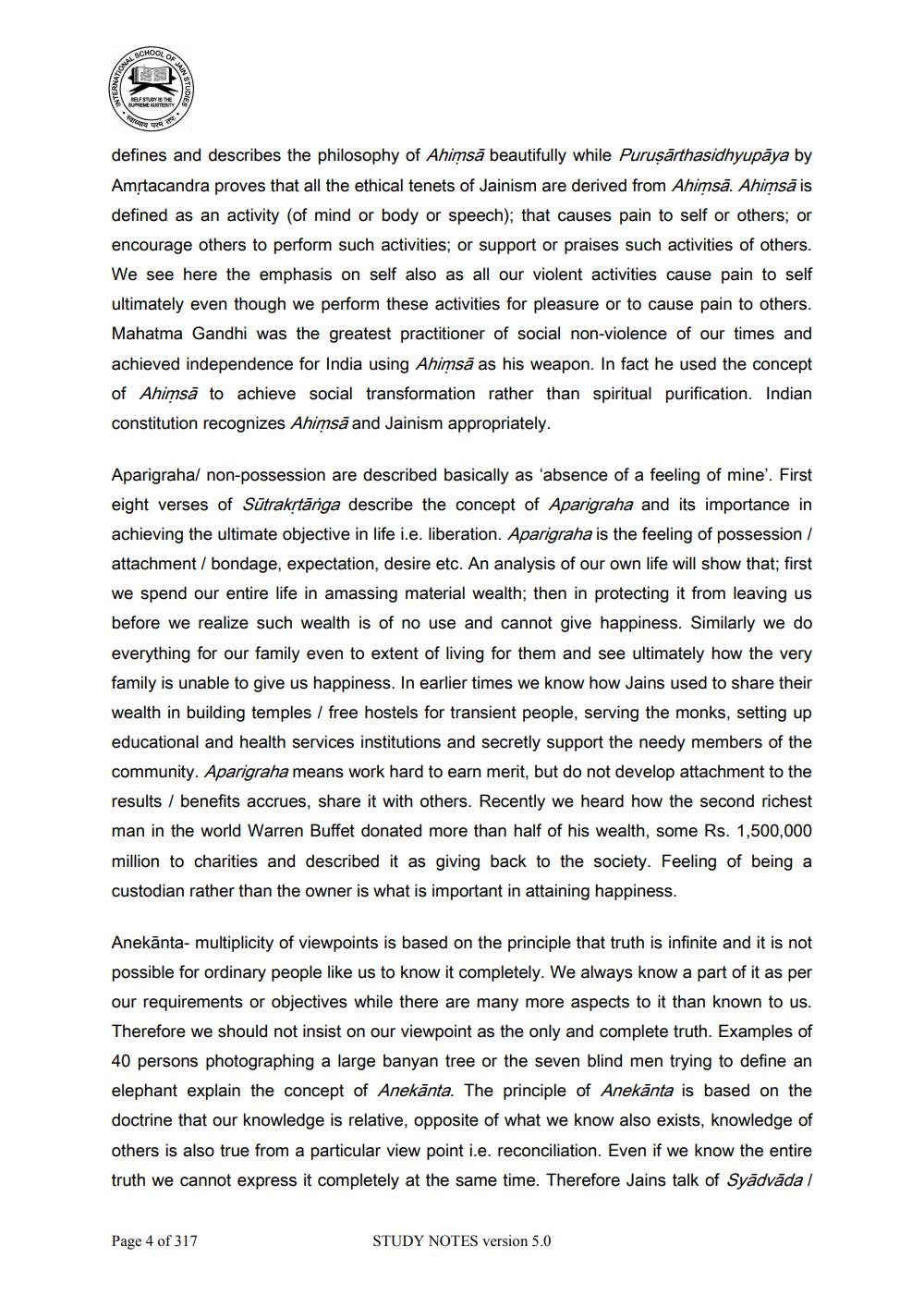________________
defines and describes the philosophy of Ahimsă beautifully while Puruşārthasidhyupāya by Amrtacandra proves that all the ethical tenets of Jainism are derived from Ahimsā. Ahimsā is defined as an activity (of mind or body or speech); that causes pain to self or others; or encourage others to perform such activities; or support or praises such activities of others. We see here the emphasis on self also as all our violent activities cause pain to self ultimately even though we perform these activities for pleasure or to cause pain to others. Mahatma Gandhi was the greatest practitioner of social non-violence of our times and achieved independence for India using Ahimsā as his weapon. In fact he used the concept of Ahimsā to achieve social transformation rather than spiritual purification. Indian constitution recognizes Ahimsā and Jainism appropriately.
Aparigrahal non-possession are described basically as 'absence of a feeling of mine'. First eight verses of Sūtrakrtānga describe the concept of Aparigraha and its importance in achieving the ultimate objective in life i.e. liberation. Aparigraha is the feeling of possession / attachment / bondage, expectation, desire etc. An analysis of our own life will show that; first we spend our entire life in amassing material wealth; then in protecting it from leaving us before we realize such wealth is of no use and cannot give happiness. Similarly we do everything for our family even to extent of living for them and see ultimately how the very family is unable to give us happiness. In earlier times we know how Jains used to share their wealth in building temples / free hostels for transient people, serving the monks, setting up educational and health services institutions and secretly support the needy members of the community. Aparigraha means work hard to earn merit, but do not develop attachment to the results / benefits accrues, share it with others. Recently we heard how the second richest man in the world Warren Buffet donated more than half of his wealth, some Rs. 1,500,000 million to charities and described it as giving back to the society. Feeling of being a custodian rather than the owner is what is important in attaining happiness.
Anekānta- multiplicity of viewpoints is based on the principle that truth is infinite and it is not possible for ordinary people like us to know it completely. We always know a part of it as per our requirements or objectives while there are many more aspects to it than known to us. Therefore we should not insist on our viewpoint as the only and complete truth. Examples of 40 persons photographing a large banyan tree or the seven blind men trying to define an elephant explain the concept of Anekānta. The principle of Anekānta is based on the doctrine that our knowledge is relative, opposite of what we know also exists, knowledge of others is also true from a particular view point i.e. reconciliation. Even if we know the entire truth we cannot express it completely at the same time. Therefore Jains talk of Syādvāda /
Page 4 of 317
STUDY NOTES version 5.0




